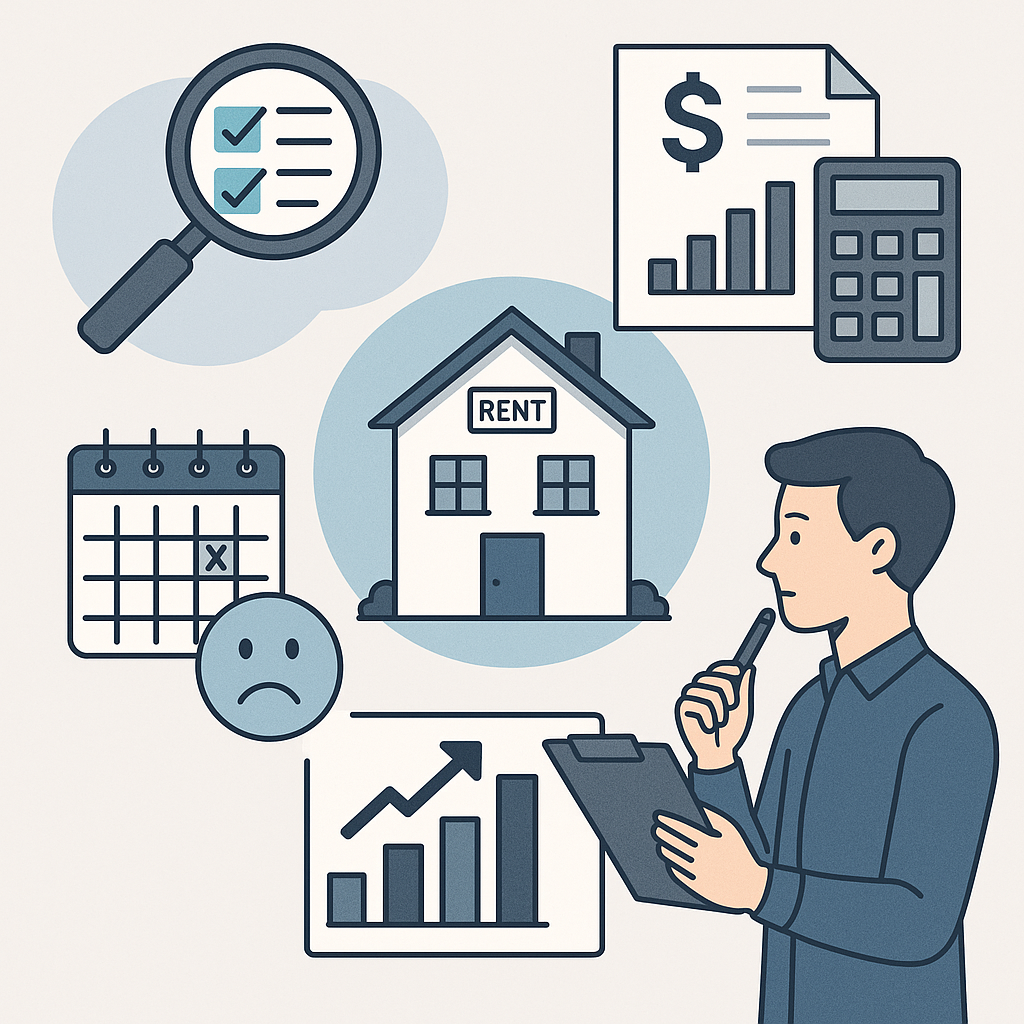Categories
Real Estate InvestingPublished September 25, 2025
How to Evaluate Rental Property Cash Flow

Investing in rental property can be an excellent way to build long-term wealth, but success depends on properly evaluating cash flow before you buy. Cash flow is the money left over each month after collecting rent and paying all expenses. Here’s how to evaluate it step by step.
1. Estimate Rental Income
Start with realistic rental income projections. Research comparable properties in the area to see current rental rates. Don’t assume top-of-market rent; instead, use conservative estimates to protect your investment against vacancies or slower rental demand.
2. Calculate Operating Expenses
Expenses include property taxes, insurance, maintenance, management fees, utilities (if you cover them), and reserves for repairs. A common rule of thumb is that operating costs can run between 35% and 50% of gross rental income.
3. Factor in Financing Costs
If you’re using a mortgage, include principal and interest payments. Even if you’re buying in cash, consider the “opportunity cost” of tying up capital that could be invested elsewhere.
4. Account for Vacancies
Few properties are rented 100% of the time. A safe practice is to set aside 5–10% of projected rent for vacancy loss. This ensures your numbers remain accurate even when the property isn’t producing income.
5. Run the Cash Flow Formula
Cash Flow = (Gross Rental Income – Operating Expenses – Vacancy Costs – Debt Payments).
A positive cash flow means the property is generating income each month.
Final Thoughts
Evaluating rental property cash flow helps you avoid surprises and invest with confidence. Conservative projections, realistic expenses, and a solid vacancy buffer can make the difference between a profitable property and a money pit.





